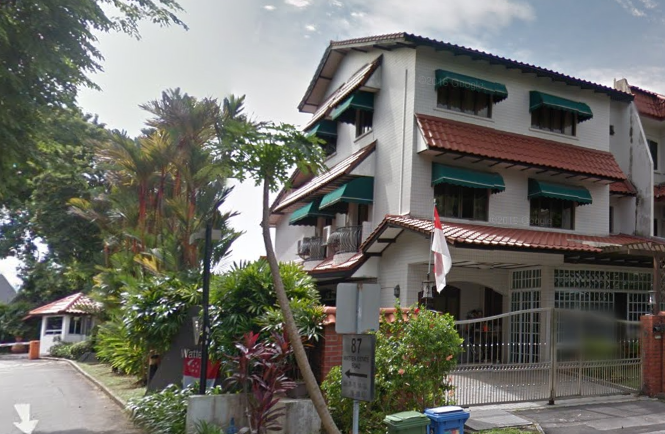Navigating Darkness: Effective Depression Therapy Techniques for Recovery
Depression is a debilitating mental health condition that can affect every aspect of a person’s life, from their relationships to their work and overall well-being. However, there are numerous effective therapy techniques available that can help individuals navigate the darkness of depression and find a path to recovery. This article explores some of the most effective depression therapy techniques and how they contribute to the recovery process.
Understanding Depression
What is Depression?
Depression is more than just feeling sad or going through a rough patch. It is a serious mental health disorder characterized by persistent feelings of sadness, hopelessness, and a lack of interest or pleasure in activities. It can also include physical symptoms such as changes in sleep, appetite, and energy levels.
Symptoms of Depression
- Persistent sad, anxious, or “empty” mood
- Loss of interest or pleasure in hobbies and activities
- Changes in appetite and weight
- Sleep disturbances (insomnia or oversleeping)
- Fatigue or decreased energy
- Feelings of worthlessness or excessive guilt
- Difficulty concentrating, remembering, or making decisions
- Thoughts of death or suicide
Effective Depression Therapy Techniques
1. Cognitive-Behavioral Therapy (CBT)
How CBT Works
Cognitive-Behavioral Therapy (CBT) is one of the most widely used and researched forms of therapy for depression. It focuses on identifying and changing negative thought patterns and behaviors that contribute to depression. CBT helps individuals develop healthier ways of thinking and responding to life situations.
Techniques Used in CBT
- Cognitive Restructuring: Identifying and challenging negative thought patterns and replacing them with more realistic and positive thoughts.
- Behavioral Activation: Encouraging engagement in enjoyable and meaningful activities to combat inactivity and isolation.
- Mindfulness: Incorporating mindfulness practices to increase awareness and acceptance of the present moment.
2. Interpersonal Therapy (IPT)
How IPT Works
Interpersonal Therapy (IPT) focuses on improving interpersonal relationships and communication patterns that may contribute to depression. It helps individuals understand and address issues in their relationships that can affect their mood.
Techniques Used in IPT
- Role Playing: Practicing new ways of interacting with others in a safe and supportive environment.
- Communication Skills Training: Developing effective communication skills to express needs and resolve conflicts.
- Grief and Loss Processing: Addressing unresolved grief and loss that may be contributing to depressive symptoms.
3. Psychodynamic Therapy
How Psychodynamic Therapy Works
Psychodynamic therapy explores the unconscious mind and past experiences to uncover the root causes of depression. It aims to help individuals gain insight into their emotions and behaviors, leading to long-term emotional growth and healing.
Techniques Used in Psychodynamic Therapy
- Free Association: Encouraging individuals to freely share thoughts and feelings to uncover unconscious patterns.
- Dream Analysis: Exploring the content of dreams to gain insight into the unconscious mind.
- Transference: Examining the transfer of feelings from important relationships onto the therapist to understand and resolve past conflicts.
4. Mindfulness-Based Cognitive Therapy (MBCT)
How MBCT Works
Mindfulness-Based Cognitive Therapy (MBCT) combines cognitive therapy techniques with mindfulness practices. It helps individuals develop a non-judgmental awareness of their thoughts and feelings, reducing the risk of depressive relapse.
Techniques Used in MBCT
- Mindfulness Meditation: Practicing mindfulness meditation to increase awareness and acceptance of the present moment.
- Body Scan: Focusing attention on different parts of the body to develop mindfulness and relaxation.
- Mindful Movement: Incorporating gentle movement, such as yoga, to promote physical and mental well-being.
5. Dialectical Behavior Therapy (DBT)
How DBT Works
Dialectical Behavior Therapy (DBT) is particularly effective for individuals with severe depression and co-occurring conditions, such as borderline personality disorder. It combines cognitive-behavioral techniques with mindfulness practices to help individuals manage emotions and improve relationships.
Techniques Used in DBT
- Emotion Regulation: Developing skills to understand and manage intense emotions.
- Distress Tolerance: Learning strategies to tolerate and survive crises without making things worse.
- Interpersonal Effectiveness: Building skills to communicate effectively and maintain healthy relationships.
6. Acceptance and Commitment Therapy (ACT)
How ACT Works
Acceptance and Commitment Therapy (ACT) encourages individuals to accept their thoughts and feelings rather than fighting against them. It focuses on living a meaningful life based on personal values, despite the presence of depression.
Techniques Used in ACT
- Acceptance: Learning to accept unpleasant thoughts and feelings without trying to change them.
- Cognitive Defusion: Reducing the impact of negative thoughts by viewing them as separate from the self.
- Values Clarification: Identifying personal values and committing to actions that align with those values.
The Path to Recovery
Building a Support System
A strong support system is crucial for recovery from depression. This includes supportive relationships with family, friends, and mental health professionals. Group therapy and support groups can also provide valuable connections with others who understand the challenges of depression.
Developing Healthy Habits
Healthy habits, such as regular exercise, a balanced diet, and sufficient sleep, can significantly impact mood and overall well-being. Incorporating these habits into daily life can complement therapy and enhance the recovery process.
Setting Realistic Goals
Setting realistic and achievable goals can provide a sense of purpose and direction. These goals should be specific, measurable, and attainable, helping individuals build confidence and motivation as they progress.
Practicing Self-Compassion
Self-compassion involves treating oneself with kindness and understanding during difficult times. It is essential for individuals recovering from depression to be gentle with themselves and recognize their efforts and progress.
Conclusion
Navigating the darkness of depression can be challenging, but effective therapy techniques offer a path to recovery. Whether through CBT, IPT, psychodynamic therapy, MBCT, DBT, or ACT, individuals can find the support and strategies they need to heal from within. By building a support system, developing healthy habits, setting realistic goals, and practicing self-compassion, individuals can overcome depression and lead fulfilling, meaningful lives. If you or someone you know is struggling with depression, seeking professional help is a crucial step towards recovery and well-being.






